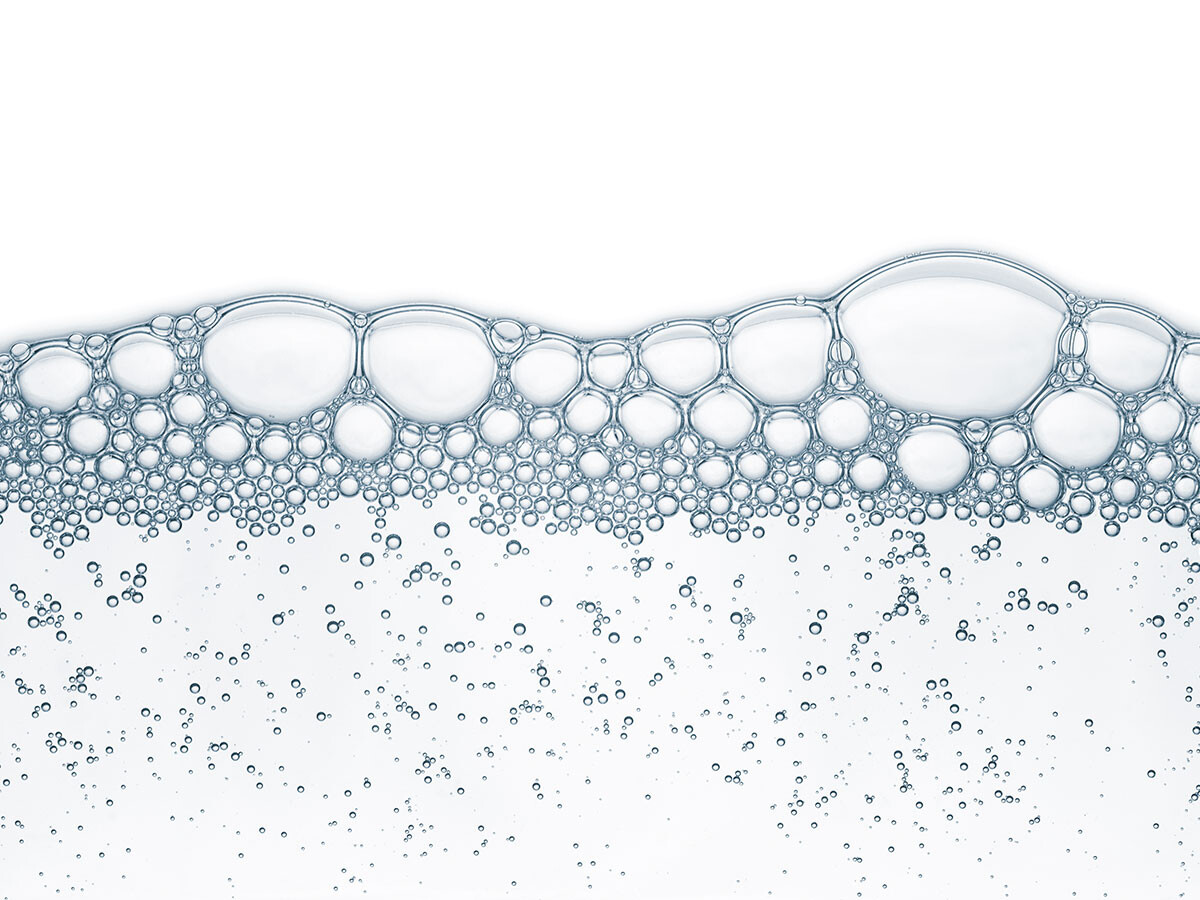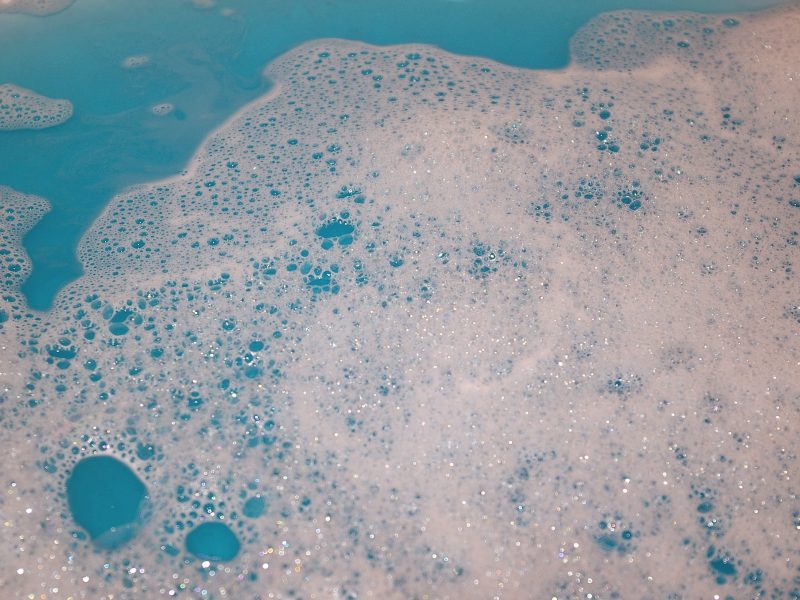Effective Use of Defoamers in the Pharmaceutical Manufacturing Process
Wiki Article
Selecting the Right Defoamer for Your Particular Application Needs
Selecting the ideal defoamer for details application demands is a nuanced procedure that demands careful factor to consider of multiple variables, such as the foam operating, type, and medium conditions. Comprehending the nuances of defoamer performance-- consisting of speed and persistence-- while additionally accounting for ecological and regulatory elements is critical.Recognizing Foam Formation
Foam development occurs when gas is entraped within a liquid, producing a stable structure of bubbles. This sensation can significantly affect various industrial processes, especially in fields such as food production, pharmaceuticals, and wastewater treatment. The existence of foam can hinder mixing, minimize product quality, and even cause functional inefficiencies.Foam typically forms because of a combination of factors, consisting of surface-active agents, agitation, and the qualities of the fluid stage. Surfactants lower the surface stress of the liquid, facilitating the development of bubbles that can integrate and support. Agitation, whether from mechanical stirring or gas intro, improves bubble formation, resulting in raised foam volume.
Understanding the auto mechanics of foam development is crucial for sectors intending to maximize their procedures. By determining the certain conditions that promote foam generation, companies can execute approaches to mitigate its impacts.
Kinds of Defoamers Available
Different sorts of defoamers are readily available to deal with the difficulties posed by foam in industrial applications. defoamers. Extensively identified, defoamers come under three classifications: silicone-based, non-silicone-based, and all-natural defoamersSilicone-based defoamers are renowned for their effectiveness and stability across a vast range of temperatures and pH levels. They are commonly used in applications where strong foam suppression is needed, such as in coverings, adhesives, and paints. Their reduced surface tension permits fast foam collapse.
Non-silicone-based defoamers, commonly made from natural substances, provide an option for applications conscious silicone residues. These defoamers can be additional split into polyether and ester types, each tailored to meet particular formulation demands. Non-silicone defoamers are frequently used in food processing and personal treatment items because of their compatibility with different formulas.
Natural defoamers, originated from plant or pet resources, are obtaining grip as a result of their eco-friendly account. These items are specifically appealing in applications where regulative compliance and sustainability are paramount, such as in agrochemicals and biotechnology.
Choosing the right kind of defoamer is critical for maximizing performance and ensuring compatibility with specific applications.
Trick Application Factors To Consider
When choosing a defoamer, it is necessary to consider the details application demands to make sure ideal performance. defoamers. Various markets have distinct demands, such as food processing, pharmaceuticals, or wastewater therapy, and each application may call for distinct defoaming residential propertiesKey factors to review consist of the tool in which the defoamer will certainly be utilized, whether it is water-based, oil-based, or a combination thereof. The temperature and pH degrees of the application can also greatly affect the effectiveness of a defoamer. In addition, compatibility with other chemicals existing in the system is crucial to avoid negative reactions that might compromise performance.
An additional essential factor to consider is the foaming actions of the particular system. Recognizing whether the foam forms swiftly or gradually can direct the option of a defoamer that targets the origin effectively. In addition, the desired rate of defoaming can affect official website the option, as linked here some applications require fast action while others may endure slower defoaming processes.
Finally, regulatory and ecological considerations should not be forgotten, particularly in sectors with rigorous conformity needs. Selecting a defoamer that aligns with these aspects makes sure both efficiency and security in the application.

Efficiency Testing Methods
Evaluating the efficiency of a defoamer calls for a methodical method to testing that properly determines its efficiency in particular applications. Various efficiency testing approaches can be used to determine the optimal defoamer for an offered formula.One common method is the bubble examination, which reviews the defoamer's capability to decrease foam quantity in time. This examination includes generating a secure foam and then adding the defoamer to observe the price of foam collapse. One more approach is the dynamic foam examination, where foam is produced under controlled problems to simulate real-world application circumstances. This method gives insights right into exactly how the defoamer executes under varying shear problems. recommended you read

Inevitably, choosing the proper performance testing method depends upon the specific application and the sort of foam being dealt with. Each method provides useful information that can assist formula adjustments and enhance the efficiency of the defoamer in useful applications.
Best Practices for Option


Following, think about the defoamer's efficiency in terms of speed of action and determination. A quick-acting defoamer may be required for processes where rapid foam suppression is critical, while a more persistent formulation might be required for long term foam control. In addition, review the ecological influence of the defoamer, including its biodegradability and any type of regulative compliance requirements.
Conduct tests with chosen defoamers to determine their efficiency in real-world conditions. By sticking to these best techniques, you can enhance foam control performance and guarantee the longevity of your processes.
Verdict
In summary, selecting the suitable defoamer requires a thorough evaluation of various elements, including foam kind, tool, operating problems, and ecological factors to consider. Recognizing the one-of-a-kind characteristics of foam formation and the offered defoamer alternatives is crucial.Selecting the suitable defoamer for particular application needs is a nuanced process that demands careful consideration of numerous variables, such as the foam operating, kind, and tool conditions.Picking the right defoamer is crucial for achieving optimum efficiency in foam control applications. A quick-acting defoamer might be required for processes where rapid foam reductions is essential, while an extra consistent formula might be needed for long term foam control.In recap, choosing the appropriate defoamer necessitates a comprehensive evaluation of numerous variables, consisting of foam type, tool, operating conditions, and environmental factors to consider. Comprehending the distinct characteristics of foam development and the readily available defoamer alternatives is important.
Report this wiki page